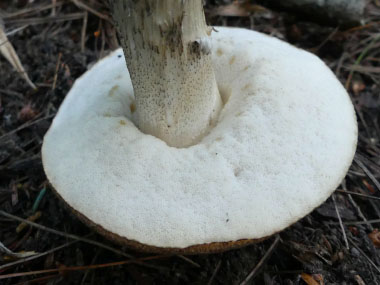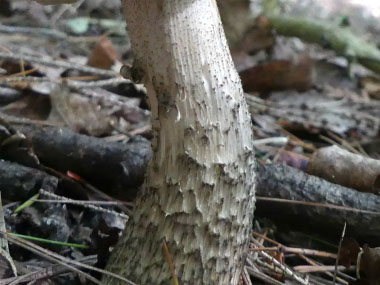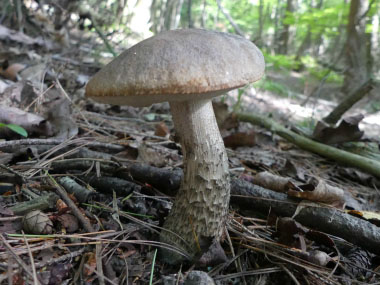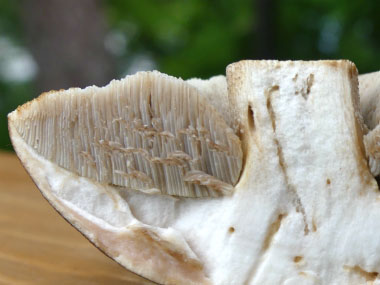






Do not eat any fungi that has not been properly identified by a qualified professional, some are DEADLY when ingested. All edible wild fungi MUST be cooked.
This common edible autumn mushroom is not as firm and tasty as the best boletes, but is often mixed with other mushrooms or dried. They can be added to risottos, stews and sauces. Leccinum comes from the Italian leccino, which was used to describe rough-stemmed boletes. Scabrum is from the Latin scaber, meaning rough, rugged or roughened. This bolete is easy to identify. There are a few other Leccinums with brown caps which can be hard to distinguish but none of these are poisonous; regardless, always thoroughly cook before consuming.
Type
Distinguishing Features
The cap can appear to have various shades of brown, and is sticky to the touch when wet. The surface is initially finely tomentose (velvet-like) but usually becomes smoother with age. Caps range from 5 to 15cm in diameter when fully expanded. Stems are white or buff measuring 2 to 3 cm in diametre. Immature specimens have barrel-shaped stems; at maturity most stems are more regular in diametre, tapering slightly towards the cap. Dark brown woolly scales cover the whole of the stem surface but are noticeably coarser on the lower part of the stem.
Height
They typically grow anywhere from 7 to 20 cm tall.
Habitat
These boletes are found under or very close to birch trees. (Boletes are mycorrhizal, meaning they form symbiotic relationships with the roots of trees.) These boletes have been found throughout Canada, the U.S., Europe, parts of Asia, Australia and New Zealand.
Spore Print
Spore prints are brown and if seen under a microscope are subfusiform.
Season
August to November.
Gills
No gills. Boletes have small pores underneath the cap that are usually quite spongy.
Edibility
This must be thoroughly cooked before eating! Some consider this to be a good edible mushroom however according to Galloway Foods, a trustworthy source, this bolete is usually best dried and mixed with other dried fungi and used as thickener in stock pots. Some people may experience digestion issues with Leccinums.
Other Name
Rough Birch Bolete.
Recipes
To support our efforts please browse our store (books with medicinal info, etc.).
Winter Survival Food Handbook

PDF Plant Magazines
Types of Wild Food
Geographic Zones Seasons
Disclaimer
EdibleWildFood.com is informational in nature. While we strive to be 100% accurate, it is solely up to the reader to ensure proper plant identification. Some wild plants are poisonous or can have serious adverse health effects.
We are not health professionals, medical doctors, nor are we nutritionists. It is up to the reader to verify nutritional information and health benefits with qualified professionals for all edible plants listed in this web site. Please click here for more information.
Why Edible Wild Food?
- Food costs are rising
- Free, wild food is readily abundant
- Wild food adds nutrition to your diet
- Wild food can help treat various medical conditions





